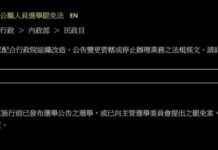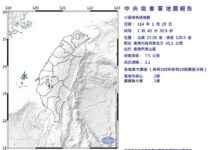Unleashing Hidden Potential: The Power of Adaptability in Society
As technology advances rapidly, various applications beyond imagination are emerging. In the highly scrutinized topic of “transportation,” the traces of modern technology such as AI, 5G, and big data can be seen. In this episode, we invited Director Zhang Xinfu of the Taoyuan City Government’s Transportation Bureau to share how the city government is using policies to strengthen the public transportation network and provide people with safer, more comfortable, and convenient transportation services through the assistance of smart technology, realizing a smart Taoyuan that prioritizes people’s needs. The Taoyuan City Government has pioneered the “train-to-employment” program for bus drivers, injecting fresh talent into the industry. Due to the impacts of aging and declining birth rates, Taiwan has long faced a shortage of bus drivers in public transportation. The COVID-19 pandemic caused a reduction in public transportation operations and a significant decrease in bus services, leading to many drivers not returning to work, exacerbating the existing shortage of drivers. Director Zhang Xinfu of the Taoyuan City Government’s Transportation Bureau acknowledged that despite bus drivers’ monthly salary reaching as high as NT$60,000-80,000, as of early this year, there were still 2,000 driver vacancies across various counties and cities in Taiwan, with Taoyuan City alone facing a shortage of 250 drivers. The main reasons for this shortage are the long working hours of drivers, the need to sit for extended periods, inflexible working environments, and potential risks such as passenger complaints and traffic accidents, making it difficult to attract young people to enter the industry. This situation has left the industry talent pool dry and in need of revitalization. To address this generational issue, the Taoyuan City Government’s Transportation Bureau has devised a “three-pronged” strategy of fortifying the base, expanding the source, and reducing expenditure to tackle the challenging driver shortage situation.
Strengthening the Base: Enhancing Driver Benefits
The city government has adjusted budget allocations to subsidize the passenger transport industry, reviewed bus operating costs, and increased driver salaries to improve the bus operating environment and prevent further talent loss. They have also introduced the “train-to-employment” program for large bus drivers to expand the source of talent. This program offers favorable subsidy conditions to recruit new drivers and incorporates the concept of retention bonuses from the technology industry to design a multi-tiered incentive mechanism. The goal is to encourage participants to stay in the program, prevent talent drain after training, and achieve cost savings. Director Zhang explained, “In other counties and cities, individuals have to wait until they obtain their large bus driver’s license and start working to receive subsidies. However, this poses a financial challenge for individuals during the training and examination period. Therefore, we have made adjustments to match individuals with passenger transport companies during the training and examination period, with the city government bearing the basic salary and driver training costs. This not only reduces the initial financial burden for individuals entering the driver profession but also ensures uninterrupted income.” Overall, ordinary citizens who fully participate in the program can receive approximately NT$200,000 in subsidies. Additionally, new immigrants or indigenous people can receive extra bonuses, new immigrant workplace adaptation courses, and additional subsidies for savings insurance.
Expanding the Source: Train-to-Employment Success
The “train-to-employment” program has seen enthusiastic participation, with over 200 people signing up since February, exceeding the initial target of recruiting 200 drivers within two years. Through screening, interviews, and matching processes, around 70 individuals have entered the training phase, with 8 individuals graduating from the driver training program two weeks ago and commencing frontline driving work. Director Zhang cited the example of the “Zhongfeng Express Line” from Zhongli Pingzhen to Longtan, which has seen an increase of nearly 30 trips per day, indicating a significant improvement in bus services. Even if only 70% of trainees eventually hit the road, it can effectively alleviate the current shortage of drivers in Taoyuan.
Reducing Expenditure: Efficiency and Sustainability
Director Zhang urged other counties and cities to follow Taoyuan’s successful implementation of the “train-to-employment” program and collaborate to address the driver shortage issue collectively. He emphasized the need for the Ministry of Transportation and the Ministry of Labor to address Taiwan’s labor shortage as a long-term policy direction.
Enhancing Traffic Flow: Eccentric Left Turn Design
With a daily commuter population of 3.2 million, Taoyuan faces another significant transportation challenge: traffic congestion. Since being upgraded to a special municipality in 2014, Taoyuan’s population has grown from 2 million to 2.32 million, a 12% increase, while road…
Let us now delve deeper into the Taoyuan City Government’s innovative solutions for addressing the challenges in public transportation and traffic management. Director Zhang Xinfu shared insights into the city’s strategies to promote adaptability and innovation in society, emphasizing the importance of leveraging technology to achieve sustainable development. From initiatives to train and employ bus drivers to implementing smart transportation technologies, Taoyuan is setting a precedent for other cities to follow in creating a more efficient and people-centric urban environment.












